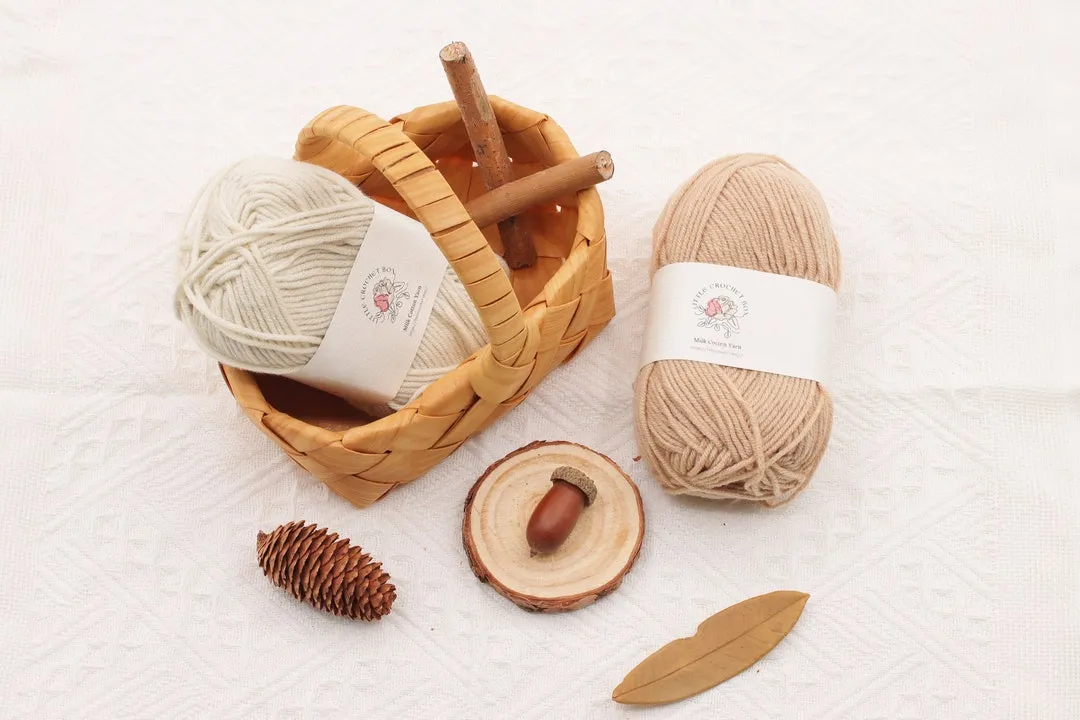
ミルクコットン糸とは何か:その用途と利点を理解する
|
|
読む時間 0 min
|
|
読む時間 0 min
ミルク コットン ヤーンは、そのユニークな特性と汎用性により、手芸家や編み物愛好家の間で人気の選択肢となっています。ミルク プロテイン (カゼイン) とコットン繊維のブレンドから作られたこの革新的なヤーンは、さまざまなプロジェクトに適したさまざまな利点を備えています。この記事では、ミルク コットン ヤーンとは何か、どのように作られるか、その利点、一般的な用途、ミルク コットン ヤーン プロジェクトの手入れ、この素晴らしい素材を理解するのに役立つよくある質問について説明します。
ミルク コットン ヤーンは、ミルク プロテインとコットン繊維を組み合わせた半合成糸で、柔らかくて耐久性があり、高級感のある素材です。ミルク コットンという名前は、ミルクから抽出したカゼイン プロテインをコットン繊維とブレンドしたことに由来しています。このユニークな組み合わせにより、柔らかく滑らかなだけでなく、自然な光沢があり、さまざまなプロジェクトで見た目にも美しい糸が生まれます。
ミルクコットン糸の特徴
ミルクコットン糸の生産には、ミルクタンパク質を使用可能な糸に変換するいくつかのステップが含まれます。ここでは、そのプロセスを詳しく見てみましょう。
ミルクコットン糸を作る最初のステップは、ミルクからカゼインを抽出することです。このプロセスには通常、次の作業が含まれます。
カゼインが抽出され加工されると、綿繊維と混合されて最終的な糸製品が作られます。混合プロセスには通常、次の作業が含まれます。
紡績後、ミルクコットン糸は仕上げ工程を経て特性を高めます。仕上げ工程には、色落ちしにくさ、柔らかさ、全体的な品質を向上させる処理が含まれる場合があります。仕上げられた糸は、かせまたは玉に巻かれ、配布および工芸プロジェクトでの使用の準備が整います。
ミルクコットン糸にはさまざまな利点があり、多くのクラフト愛好家に好まれています。主な利点は次のとおりです。
1. 抜群の柔らかさ: ミルクコットン糸は、肌に優しいシルクのようなふわふわの質感で知られています。この柔らかさは、ベビー服、毛布、繊細なアクセサリーなど、体にぴったりとフィットするアイテムに最適です。
2. 低アレルギー性: カゼインが含まれているため、ミルクコットン糸はアレルギー反応を起こしにくく、敏感肌の方にも適しています。この特性は、特にベビー用品の製作に役立ち、乳児の快適さと安全性を確保します。
3. 吸湿性: ミルクコットン糸は水分を効果的に吸収し、暖かい天候や運動中の快適さを高めます。この吸湿発散性により、着用者はドライで快適に保つことができ、夏用の衣類に最適です。
4. 耐久性: ミルクコットン糸製品は、適切に手入れすれば、弾力性と耐久性に優れています。カゼイン繊維の強度が糸全体の耐久性に寄与し、プロジェクトを日常的な使用に耐えられるようにします。
5. お手入れが簡単: ミルクコットン糸で作られた衣類は、一般的に洗濯機で洗うことができ、形や色を良好に維持できます。お手入れが簡単なため、手芸愛好家は複雑なメンテナンスを気にせずに作品を楽しむことができ、日常のアイテムとして実用的な選択肢となります。
6. 環境に優しい: ミルクコットン糸の生産には廃棄ミルクが利用されており、より持続可能な繊維産業に貢献しています。廃棄されるはずだった材料を再利用することで、ミルクコットン糸は従来の糸に代わる環境に優しい糸を提供します。

